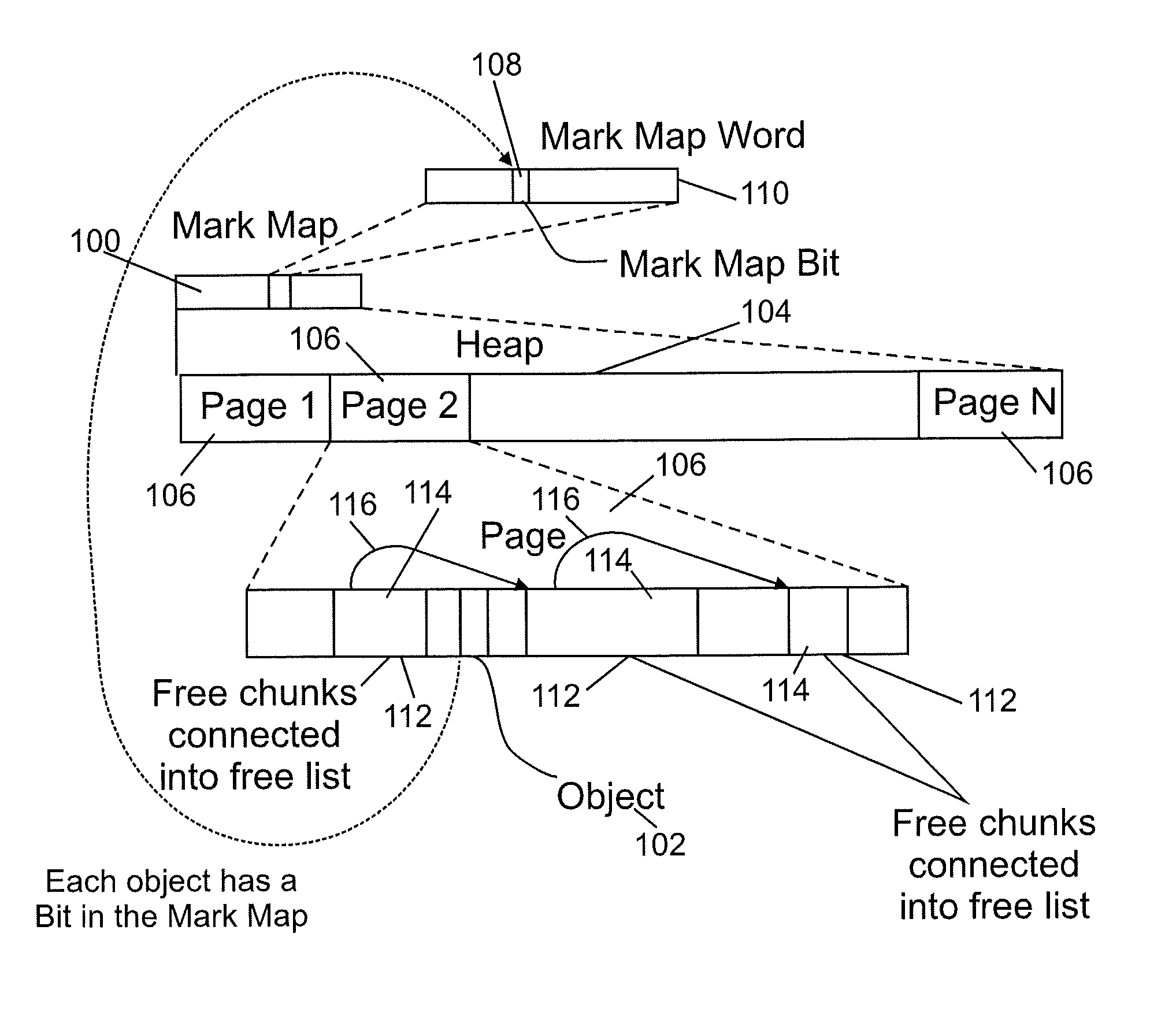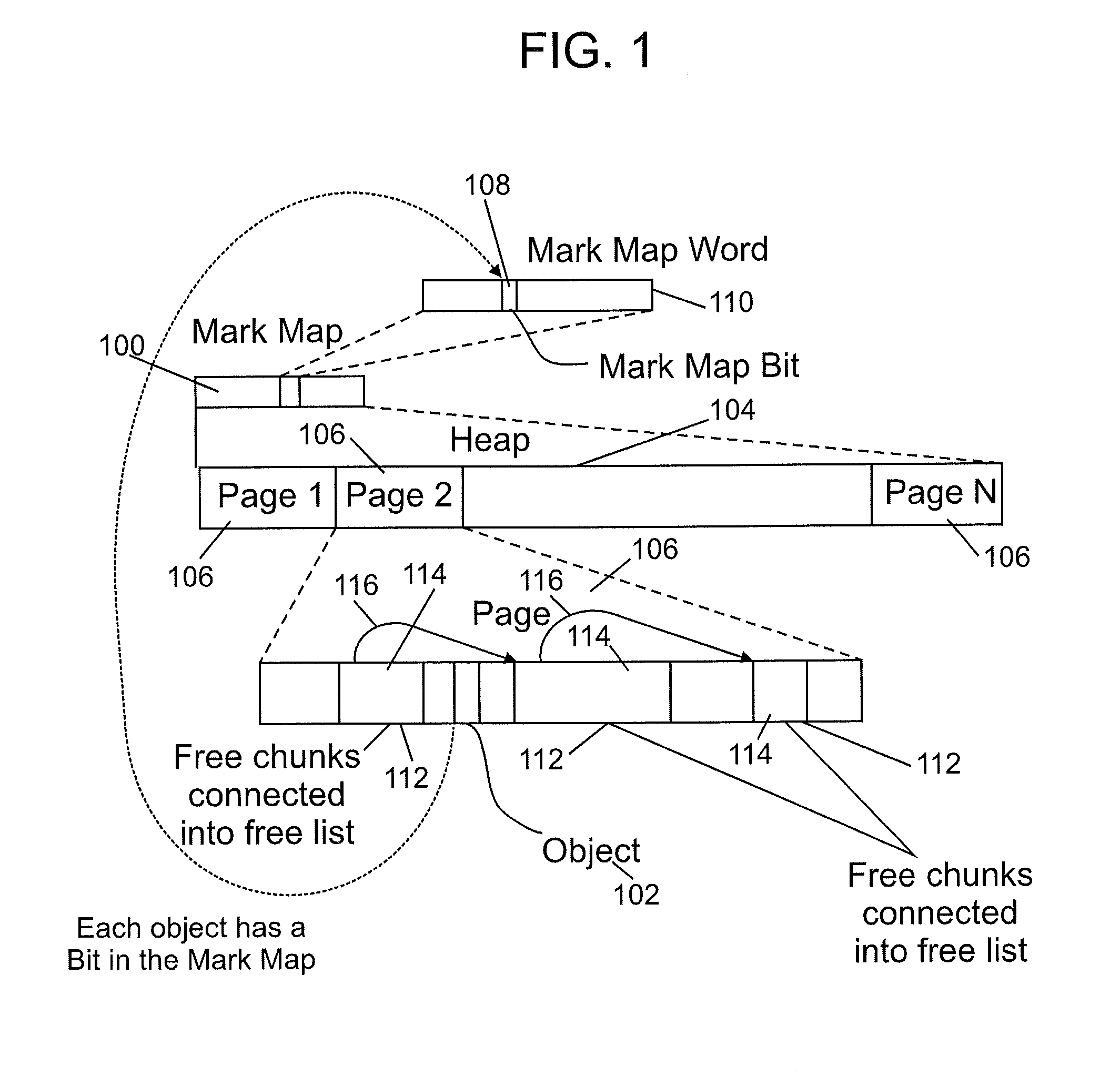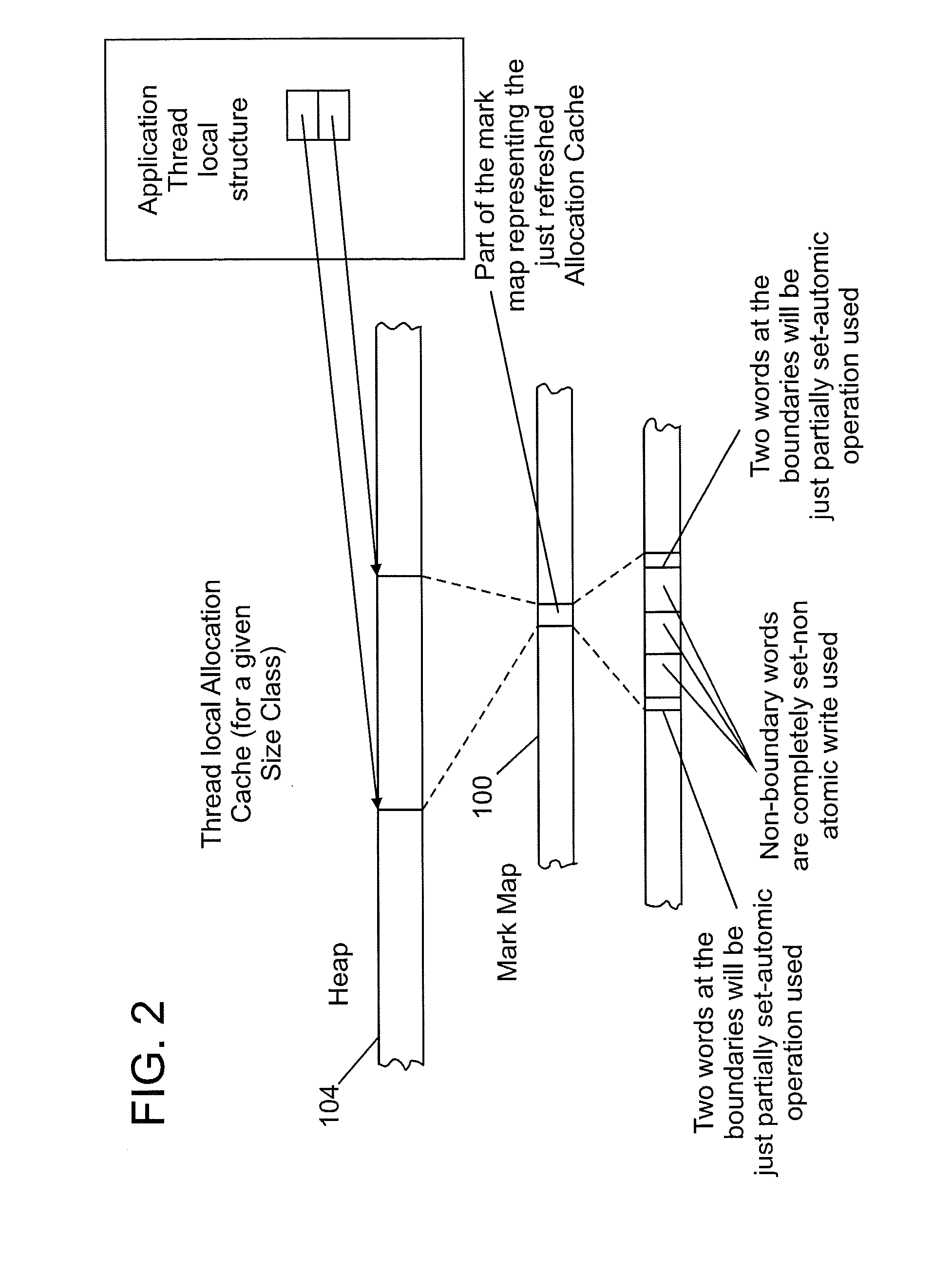Allocation cache premarking for snap-shot-at-the-beginning concurrent mark-and-sweep collector
a cache pre-marking and concurrent technology, applied in the field of computer programming and execution of computer programs, can solve the problems of unsuitable rtgc environment, unpredictable occurrence and length of pause times in the application to complete the gc process, and the cost of throughput speed associated with being able to perform incremental compaction, etc., to achieve high performance, efficient support, and high optimization
- Summary
- Abstract
- Description
- Claims
- Application Information
AI Technical Summary
Benefits of technology
Problems solved by technology
Method used
Image
Examples
Embodiment Construction
[0015]Embodiments of the present invention disassociate the process of the marking of newly allocated objects during the tracing phase of a GC process from the allocation of the individual object itself, and move the marking of newly allocated objects into the allocation cache population phase. This reduces the contention on the mark map and allows the allocation path to remain relatively short, fast, and with a cache support. It is also safe to mark the entire allocation cache in advance even though the associated objects are not yet allocated and might not ever be allocated for the duration of the tracing phase. In an embodiment, the GC process runs concurrently with an application program and occasionally interrupts or pauses operation of the application program so that the GC process can complete its task.
[0016]Referring to FIG. 1, this is accomplished with three underlying pieces of technology: (1) a mark map 100 to trace through the live object 102 during GC phases; (2) an all...
PUM
 Login to View More
Login to View More Abstract
Description
Claims
Application Information
 Login to View More
Login to View More - R&D
- Intellectual Property
- Life Sciences
- Materials
- Tech Scout
- Unparalleled Data Quality
- Higher Quality Content
- 60% Fewer Hallucinations
Browse by: Latest US Patents, China's latest patents, Technical Efficacy Thesaurus, Application Domain, Technology Topic, Popular Technical Reports.
© 2025 PatSnap. All rights reserved.Legal|Privacy policy|Modern Slavery Act Transparency Statement|Sitemap|About US| Contact US: help@patsnap.com



